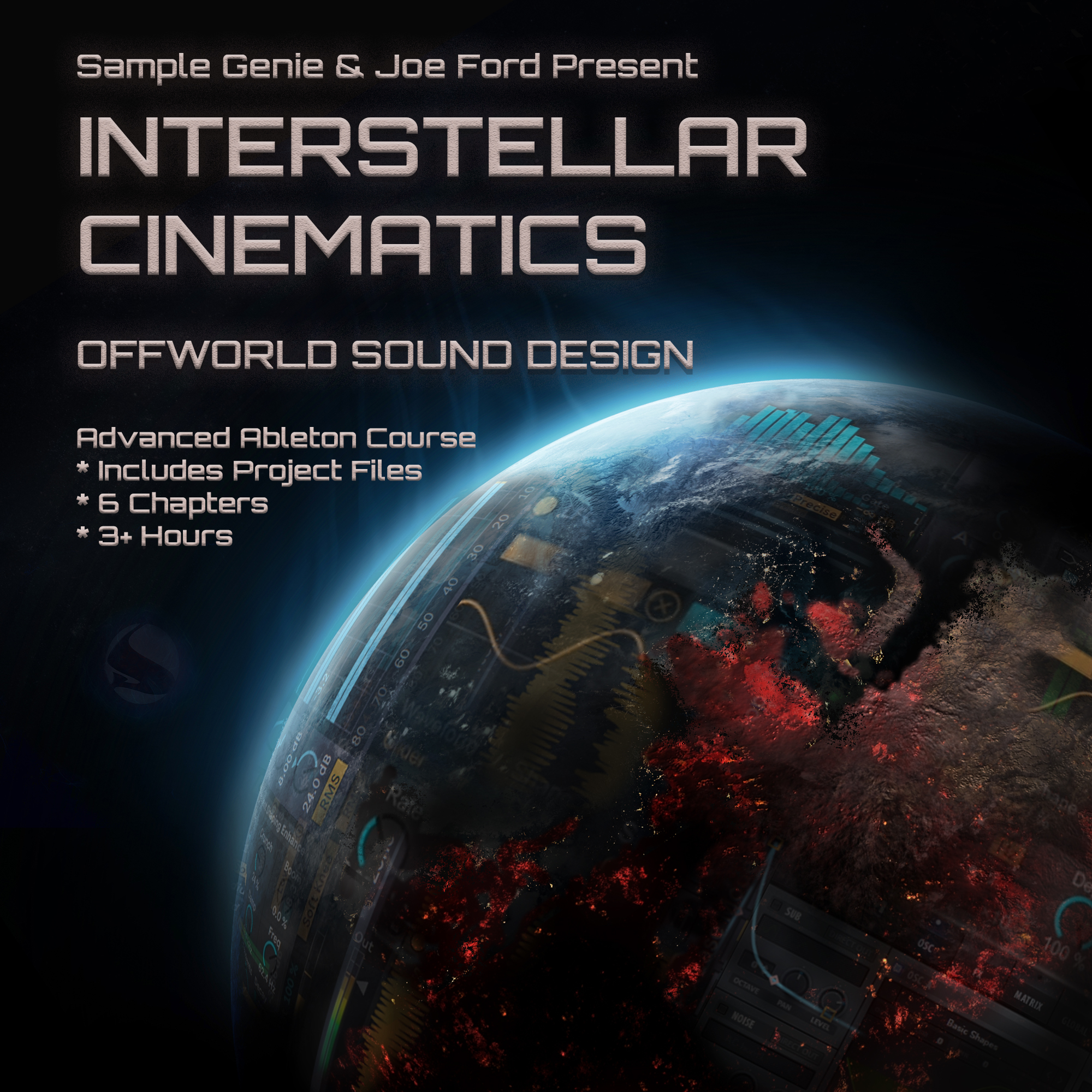Analysis of S1E08: Xtrah – Synthetic Drums
- This topic has 0 replies, 1 voice, and was last updated 6 years, 9 months ago by ,
 Harry.
Harry.
-
AuthorPosts
-
-
2017-10-25 at 17:40:54 #31463,
 HarryModerator
HarryModeratorDAW: Logic 9
Topics: drums, drum synthesis, Massive, phase alignment, sound design—
This was the first video Xtrah did for Sample Genie season 1, and the focus was on using NI Massive to create kicks and snares, making drums that are in key. The presentation might seem dry, but there is some interesting information and ideas in the video.01:00 – start with a new sound (initialize) in Massive
– OSC1 set to Sin-Squ wavetable, set in the middle of the dial.
– ➡F2 (Filter Order) is set to Parallel mode
○ Xtrah actually sets it in the middle, not sure if it’s a blend of serial and parallel, actually something I should test. Assuming Filter 1 in this case is actually sending some audio through Filter 2, but some of Filter 1’s output is bypassing Filter 2 as well. Check pages 43 to 45 of the Massive manual.
– Filter 1 is set to a Lowpass 4
– Filter 2 is set to a Highpass 2
– Output on both filters is turned up all the way; the sliders to the right of each filter.
– Filter Mix is initially set to 50/50, but adjust that once you begin layering more drums.
– 1Env is adjusted to have a quick attack, with the decay level turned down. Thinking about the pitch movement of a kick & snare.
– 1Env is then assigned to the first pitch modulation slot for OSC1, set to 24.00 (so two full octaves).
– What happens is 1Env causes OSC1’s pitch to go up 2 octaves (or 24 semi-tones) quickly, based on the envelope created in 1Env, and because of the low decay level the OSC goes back to the pitch it is set to in the pitch display (0.00). Essentially, you’ve created the transient & body of the kick.
– Of note, you could used the second pitch modulation slot instead, it does not seem to make any difference if using one slot or the other. What I do notice, but was initially difficult to see, adjusting the first slot creates a visible blue bar on top of the pitch display, while the second slot creates a bar below the display. A max value of 36.00 sets either bar all the way to the right, and a min value of -36.00 sets the bar to the left.
– 2Env is set up next, and goes to the cutoff of Filter 1, with modulation going down03:00 – adds a Noise OSC, gets unique tones
– 1Env set to Noise OSC’s amp
– 2Env set to Noise OSC’s color, turning it down06:00 – adjusting 4Env, which is the main output/amp envelope
07:30 – Insert 1, adding a Sine Shaper
– Moving the Drive up on this makes me think of Optical’s “Moving 808s”.08:40 – now building a snare
– Layered an “average sounding” live snare with a Massive snare, adding & controlling the fundamental frequency of the snare. Live snare layer for the body, synth snare for the transient.
– Says that synth kicks can work on their own, but Xtrah feels that synth snares are more for layering. Lots to consider for a snare: what it was hit with, the snare skin material, etc.
– Analyzes the frequency of the synth snare
– 1Env used to control the Amp of OSC1, does this instead of adjusting parameters of 4Env (which goes to the main amp).14:50 – feels the sound is wide in its frequency range
16:15 – point about the key played (G), but the envelopes shift the key.
– Moves down keyboard, but could probably adjust the OSC pitch itself
– Adds a ring mod using the Modulation OSC.18:00 – messing with the Noise OSC
20:30 – messing with Feedback
22:00 – bouncing down the Massive snare, then checking for issues when layered with the live snare sample.
– Xtrah states that he thinks the Massive snare is more controlled and tighter24:00 – edits out the transient of the live snare sample, goes in to a demonstration about phase issues between the two snares.
– He wants to get the sound waves moving together, recommends for drum layering in general.
– Can either move the audio file, or try a phase reverse with a utility plug-in26:30 – loop with just the synthetic drums, then layering in another break.
27:44 – demonstration of a phasing issue
30:00 – plug-in switching phase
Finishing out the video, Xtrah says that the phase demonstration is about getting the waves to move together, and that when you take this approach with all elements of a track that mixing the elements should improve.
—
THOUGHTS & QUESTIONS
– ADSR has an article about Massive and pitch, had a sound with both pitch slots used, one with a quick envelope on +pitch, other with a slow envelope on -pitch, plus a decay on the start of the envelope. Article: https://www.adsrsounds.com/ni-massive-tutorials/how-to-pitch-bend-an-ni-massive-trap-synth-up-and-down-automatically/– Last week I made some print outs of synths I like to use, to use as scratch paper for taking notes on what different parameters on the synth do. Just another approach to understanding studio tools.
– Was recently advised to aim for kicks to be in the 80 Hz to 120 Hz range, the closer to 100 is optimal, and snares in the 160 Hz to 260 Hz, the closer to 200 is optimal. Plenty of charts about key tuning, so if a track was being written in the key of F, a tuned kick would be around 87 Hz.
– I need to be more mindful of phasing issues.
– Here are the patches I made in NI Massive while following this video: https://www.dropbox.com/s/6xvv6o3uu08dy9f/Basic%20Kick%20%26%20Snare.zip?dl=0
"Knowledge kept is knowledge lost." - Bobbito Garcia
-
-
AuthorPosts
- You must be logged in to reply to this topic.


